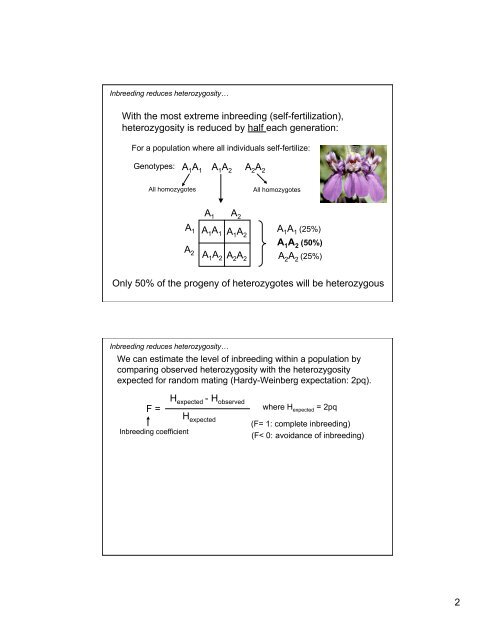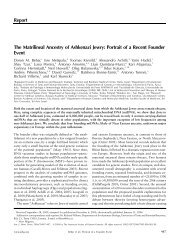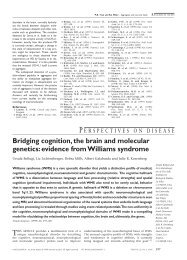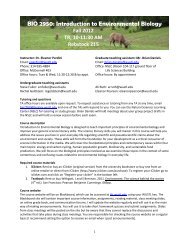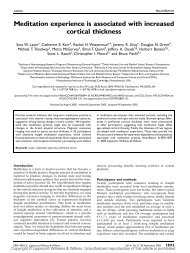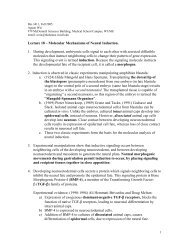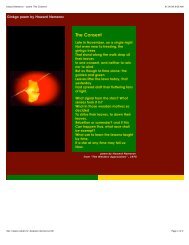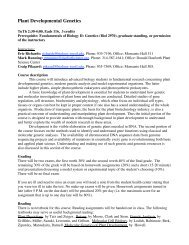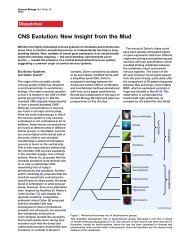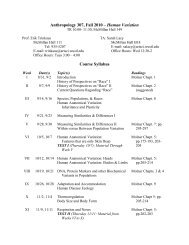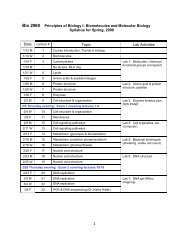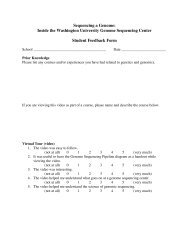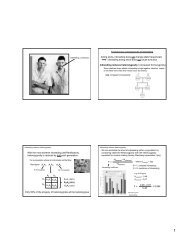increased homozygosity
increased homozygosity
increased homozygosity
Create successful ePaper yourself
Turn your PDF publications into a flip-book with our unique Google optimized e-Paper software.
Inbreeding reduces heterozygosity…<br />
With the most extreme inbreeding (self-fertilization),<br />
heterozygosity is reduced by half each generation:<br />
For a population where all individuals self-fertilize:<br />
Genotypes:<br />
A 1 A 1 A 1 A 2 A 2 A 2<br />
All homozygotes<br />
All homozygotes<br />
A 1<br />
A 1 A 2<br />
A 2<br />
A 1 A 1 A 1 A 2<br />
A 1 A 2 A 2 A 2<br />
A 1 A 1 (25%)<br />
A 1 A 2 (50%)<br />
A 2 A 2 (25%)<br />
Only 50% of the progeny of heterozygotes will be heterozygous<br />
Inbreeding reduces heterozygosity…<br />
We can estimate the level of inbreeding within a population by<br />
comparing observed heterozygosity with the heterozygosity<br />
expected for random mating (Hardy-Weinberg expectation: 2pq).<br />
F =<br />
Inbreeding coefficient<br />
H expected - H observed<br />
H expected<br />
where H expected = 2pq<br />
(F= 1: complete inbreeding)<br />
(F< 0: avoidance of inbreeding)<br />
2


